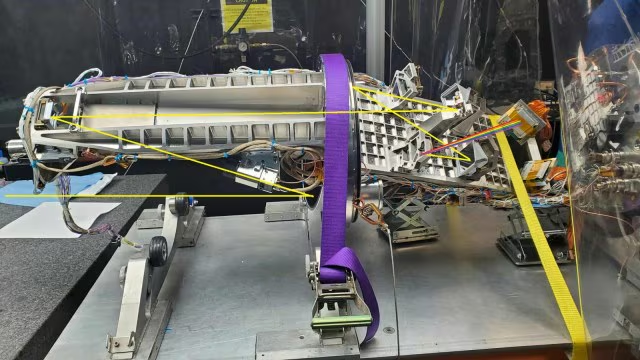



The Union Cabinet has approved the refarming of 687 MHz of spectrum for mobile services, increasing the total available spectrum from 900 MHz to 1,587 MHz. This move aims to meet the growing demand for efficient mid-band spectrum usage and prepare India for future mobile service needs, particularly for advanced technologies like 5G.

Copyright infringement not intended
Picture Courtesy:NDTVPROFIT
The Union Cabinet has approved the refarming of 687 Mhz of spectrum for mobile services.
The Union Cabinet has approved the refarming of 687 MHz of spectrum for mobile services. This increases the total available spectrum from 900 MHz to 1,587 MHz. Out of this, 320 MHz will be released immediately, while the remaining will be made available by 2028-29.
Mobile services will require around 2,000 MHz of spectrum by 2030. Currently, only 900 MHz is available, leaving a gap of 1,100 MHz. The refarming addresses this gap and aligns with the growing demand for efficient mid-band spectrum usage (1 GHz to 6 GHz).
It also prepares India to meet future mobile service needs, especially for advanced technologies like 5G.
In telecommunications, "spectrum" refers to the range of radio frequencies within the electromagnetic spectrum used for transmitting wireless signals, enabling communication between devices like mobile phones, computers, and other wireless gadgets.
It is the "airwaves" that carry data through radio waves, including technologies like cellular networks, Wi-Fi, Bluetooth, and satellite communications, with different frequency bands allocated for various purposes depending on their characteristics like range and data capacity.
|
Airwaves are radio frequencies within the electromagnetic spectrum used to carry information wirelessly for telecommunications and other services. |
Spectrum is auctioned in fixed amounts and specific bands for operators to provide communication services to consumers.
The spectrum is divided into different frequency bands, each with its own properties impacting signal propagation and suitability for various applications.
Governments regulate spectrum allocation to ensure efficient use and prevent interference between different services operating on the same frequencies.
"Spectrum refarming" refers to the process of repurposing existing radio frequency spectrum bands, used by older, less efficient technologies, to newer, more advanced technologies like 5G, allowing for better network performance and increased capacity by reallocating spectrum from outdated services to newer, more data-intensive ones, essentially maximizing the utilization of a limited resource like radio spectrum.
It allows operators to provide faster data speeds and handle more users on the same spectrum.
It can be used to extend network coverage to rural areas by leveraging lower frequency bands.
It offers a way to upgrade networks without acquiring additional spectrum through auctions.
India focusing on mid-band and high-band spectrums for 5G. Spectrum Refarming allows Communications Service Providers to modernize infrastructure efficiently, ensure readiness for 5G technologies, and improve service quality.
Must Read Articles:
Source:
|
PRACTICE QUESTION Q.Consider the following statements in the context of the Telecom Regulatory Authority of India (TRAI): 1. It is a non-statutory body. 2. It sets tariffs for telecom services. 3. It is led by a Chairperson appointed by the President. How many of the above statements are correct? A) Only one B) Only two C) All three D) None Answer: A Explanation: Statement 1 is incorrect: The Telecom Regulatory Authority of India (TRAI) is a statutory body. It was established by the Telecom Regulatory Authority of India Act, 1997. Statement 2 is correct: TRAI has the authority to fix and revise tariffs for all telecom services in India, ensuring they are reasonable and transparent for consumers. Statement 3 is incorrect: It is a statutory body that regulates the telecommunications industry in India. The TRAI is led by a Chairperson and other members appointed by the Government of India. |






© 2025 iasgyan. All right reserved